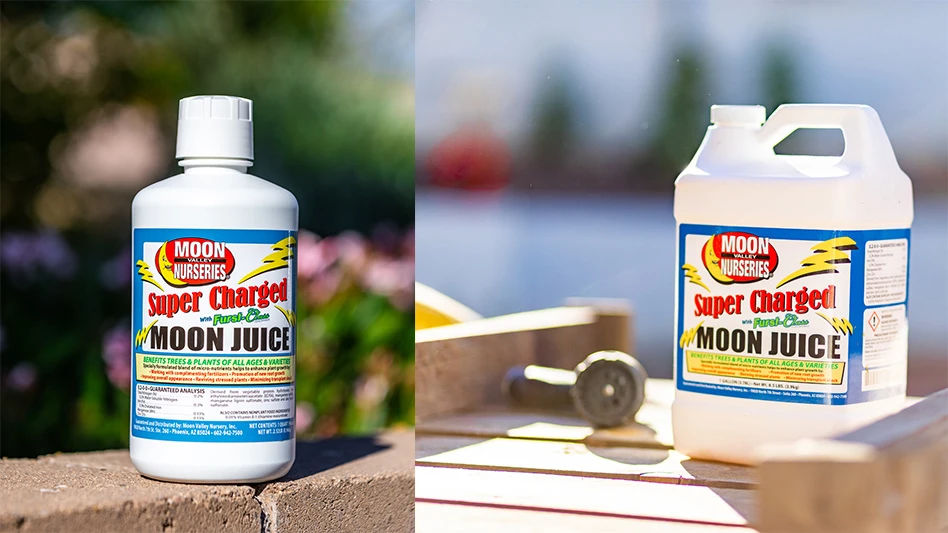 Until recently, certain parts of the country with lime and clay soils were inhospitable to rhododendrons. That has changed with the U.S. introduction of a rootstock that allows rhodies to grow in a wider range of soil types. The INKARHO rootstock was bred in Germany and is available to North American growers.
Until recently, certain parts of the country with lime and clay soils were inhospitable to rhododendrons. That has changed with the U.S. introduction of a rootstock that allows rhodies to grow in a wider range of soil types. The INKARHO rootstock was bred in Germany and is available to North American growers.
“This opens up a sales opportunity for the Midwest and other parts of the U.S. for this crop,” says Brian Decker of Decker’s Nursery in Groveport, Ohio. Decker’s is producing the INKARHO liners for sales in the U.S. “Previously, if a gardener was in a region with high pH soils for instance, rhododendrons didn’t thrive well, and most succumbed to phytophthora root rot. Now no one has to say, ‘Boy I wish I could grow rhododendrons like my mom does in North Carolina.”
The INKARHO rootstock is a pH neutral rootstock that is tolerant of acid and lime soils. In production, this series is not difficult to graft, Decker says, but just like any rhododendron, soil drainage is important.
Decker is grafting INKARHO with some well-known North American cultivars such as ‘Roseum Elegans,’ ‘Boursalt,’ ‘Chinoides’ and ‘Lee’s Dark Purple.’
“With this vigorous root system coupled with the proven North American varieties, this series should thrive in areas where they could not thrive before,” Decker says. “A lot of Oregon nurseries were growing rhododendrons in the ‘90s and shipping them everywhere, but eventually these plants died because of the bad soil conditions. This created a problem on the retail side.”
But there’s a chance to combat that and create a new market for growers, retailers and the landscape trade.
The name INKARHO is short for INter-essengemeinschaft KAlktoleranter RHOdodendron, translated as lime-tolerant rhododendron. The rootstock was tested in Europe for 25 years, according to Angela Treadwell Palmer of Plants Nouveau, the licensing agent for the line.
 Willoway Nurseries in Avon, Ohio, trialed the INKARHO rootstock in both containers and field production, both of which performed well, said Willoway marketing manager Danny Gouge.
Willoway Nurseries in Avon, Ohio, trialed the INKARHO rootstock in both containers and field production, both of which performed well, said Willoway marketing manager Danny Gouge.
“INKARHO rootstock not only allows rhododendrons to grow in new regions and soil types, but they also create a more robust plant,” Gouge says. “It’s a great plant with a lot of vigor. A lot of our shipping areas are in regions with high pH soils, and we couldn’t ship rhododendrons there. But now we’re educating the retail and the landscape trade in those areas that they can successfully sell and grow these rhododendrons.”
Willoway is selling INKARHO Lakeview Pink, which features glossy green foliage and clear pink to light violet flowers.
INKARHO also offers a fragrant line of pH-neutral rhododendrons. The Scent-Sational series is available in white and lilac. Scent-Sational White has pastel pink buds that transform into large, white flower trusses with lemon throats. Scent-Sational Lilac features purple buds that open into large, lilac flower trusses with orange throats. Both provide a sweet fragrance, and both bred for clay and lime soils.
For the landscape
If you’re selling INKARHO rhododendrons to a region that’s not familiar with the crop, or know that they’ve never done well in that certain area, some education will be necessary for success. Plants Nouveau suggests sharing these hints with retailers and contractors for planting INKARHO rhododendrons in the landscape.
 Proper siting is critical for all rhodies. It’s best to choose an eastern or northern slope because they are easily damaged by drying winds from the south or west. Here, they are less exposed to unexpected temperature changes in late spring and early fall. If you live in a windy spot, it’s a good idea to provide wind protection for your rhododendrons. Buildings and slopes act as good barriers, but there’s no replacement for evergreen shrubs and trees, which also make the perfect foil for their showy flowers.
Proper siting is critical for all rhodies. It’s best to choose an eastern or northern slope because they are easily damaged by drying winds from the south or west. Here, they are less exposed to unexpected temperature changes in late spring and early fall. If you live in a windy spot, it’s a good idea to provide wind protection for your rhododendrons. Buildings and slopes act as good barriers, but there’s no replacement for evergreen shrubs and trees, which also make the perfect foil for their showy flowers.
Many people think that rhododendrons are shade lovers, but too much shade often prevents them from blooming well, and can lead to root rot if the soil does not dry out consistently in between rains or watering. Filtered sun is ideal, where trees are pruned high enough for the morning sun to pour through the branches.
Placement is not enough
Although the INKARHO rootstock will allow people to grow rhododendrons where they’ve never been able to before, please do continue to consider soil preparation. Highly organic, well-drained soil is the best medicine for beautiful rhododendrons, so while you’re preparing your bed remember these helpful tips:
- Completely soak the root ball before removing the pot.
- Dig a hole twice as wide as the root ball, but only ¾ as deep.
- Be sure to break up any hard, clumping ground as you prepare.
A large amount of organic matter is helpful for good growth. A mixture of 50 percent composted leaf mold (preferably from pine or oak leaves) and 50 percent good garden topsoil is recommended. Avoid using peat moss, as soils with peat added can hold excessive amounts of moisture in winter and spring.
Cover the base of the hole with a small amount of mixture, and place your plant so the top of the root ball is slightly above ground level. Never plant a rhododendron deeper than the soil line in its container. Planting shallow is always better than planting too deep. Continue to fill the hole, tap the soil lightly using your feet or a shovel, and soak with water.
A heavy mulch (1-2 inches thick) of compost (decomposed bark, leaves or other organic matter) helps conserve moisture around the roots and will prevent winter injury. Mulch will prevent scorch and bark split in the winter months in colder climates. Mulch is beneficial for the plants year-round, but be careful not to mulch too high on the stems.
Rhododendrons are relatively easy to care for once they’re established. Excessive watering can be a problem, especially in the fall and winter. Take care to assess the moisture retention in your soil as the days get shorter and the nights cool down. Wet soils often lead to root rot and are the biggest cause of plant death.
Rhododendrons are not heavy feeders and grow well at relatively low nutrient levels. We recommend a slow release, coated fertilizer applied in April for best overall results. Do not feed after the first of July. Late feeding can force tender fall growth that will likely be killed by the coming winter. Any nitrogen source can be sprinkled around the base in early summer to promote flowering.
.jpg)
For more: Decker’s Nursery, www.deckersnursery.com; Willoway Nurseries, www.willowaynurseries.com; INKARHO GmbH, www.inkarho.de; Plants Nouveau, www.plantsnouveau.com.

Explore the December 2015 Issue
Check out more from this issue and find your next story to read.
Latest from Nursery Management
- Plant breeding as an art
- Society of American Florists accepting entries for 2025 Marketer of the Year Contest
- Sustainabloom launches Wholesale Nickel Program to support floriculture sustainability
- American Horticultural Society welcomes five new board members
- Get to know Christopher Brown Jr. of Lancaster Farms
- American Floral Endowment establishes Demaree Family Floriculture Advancement Fund
- The Growth Industry Episode 3: Across the Pond with Neville Stein
- The Growth Industry Episode 2: Emily Showalter on how Willoway Nurseries transformed its business






